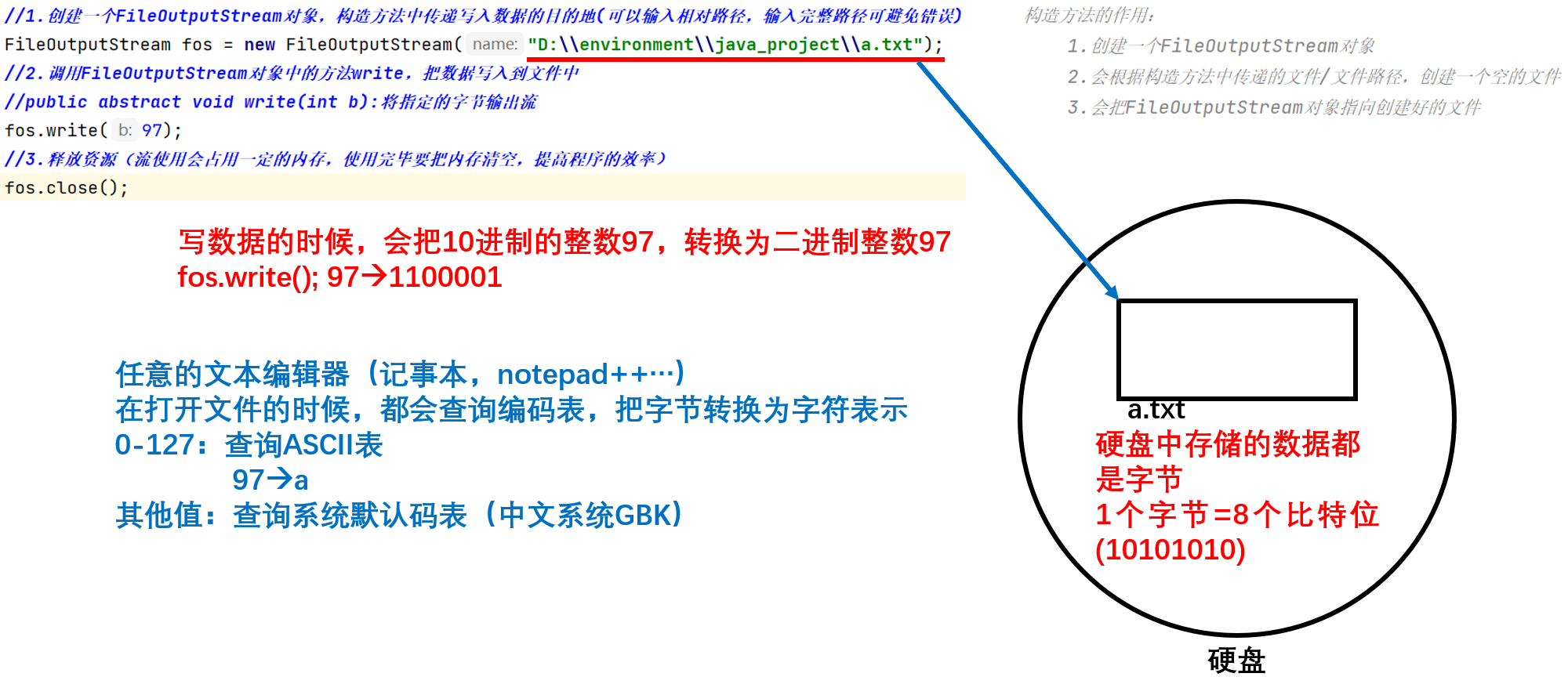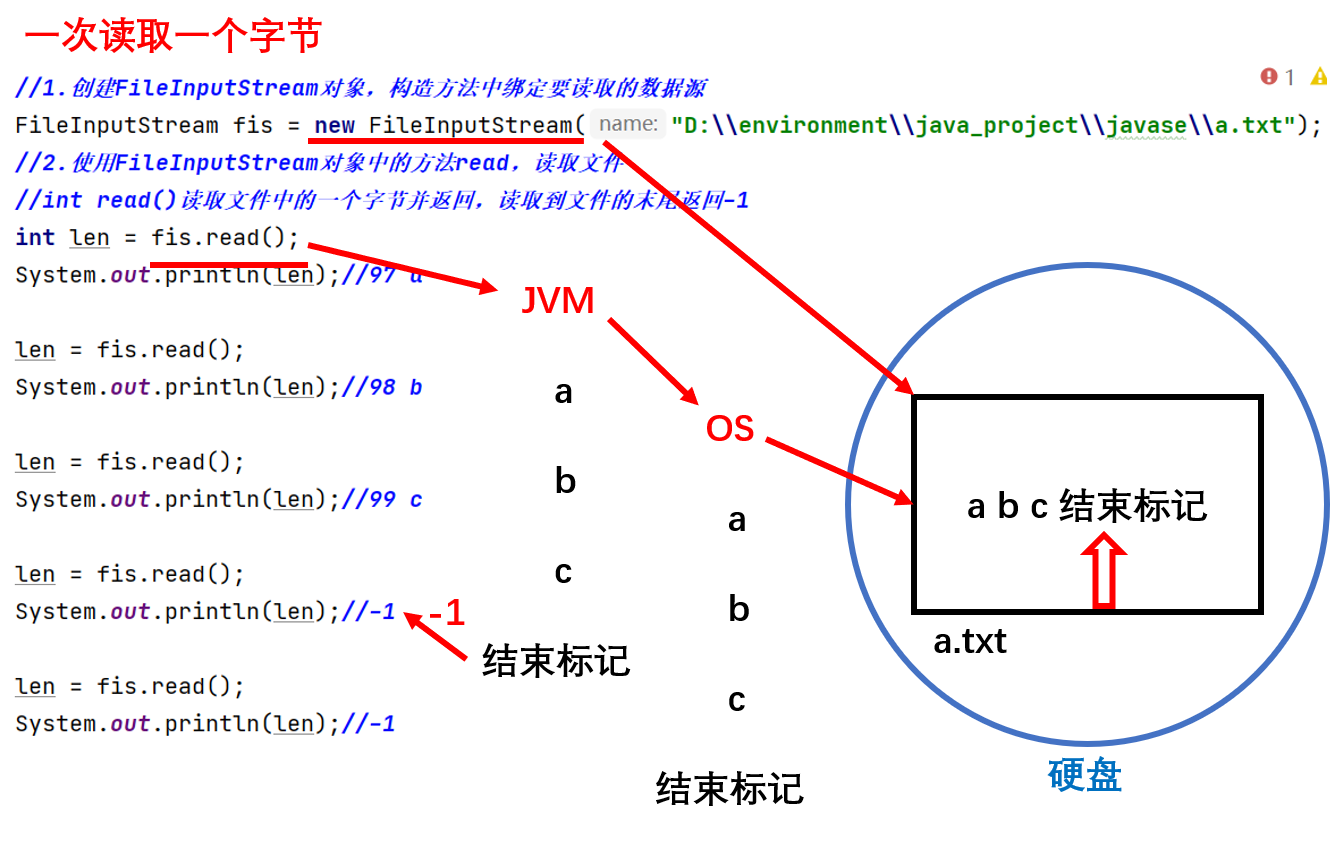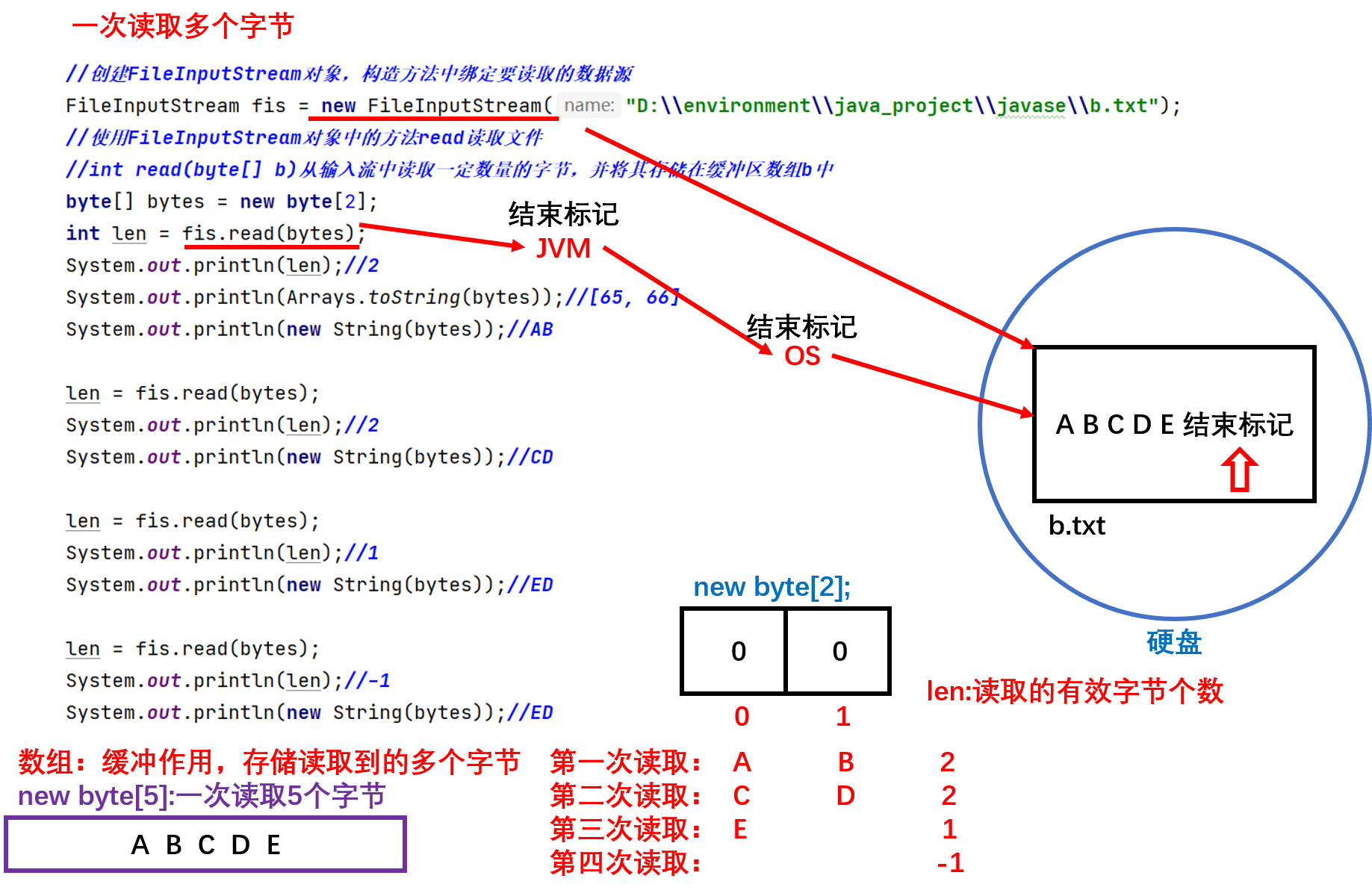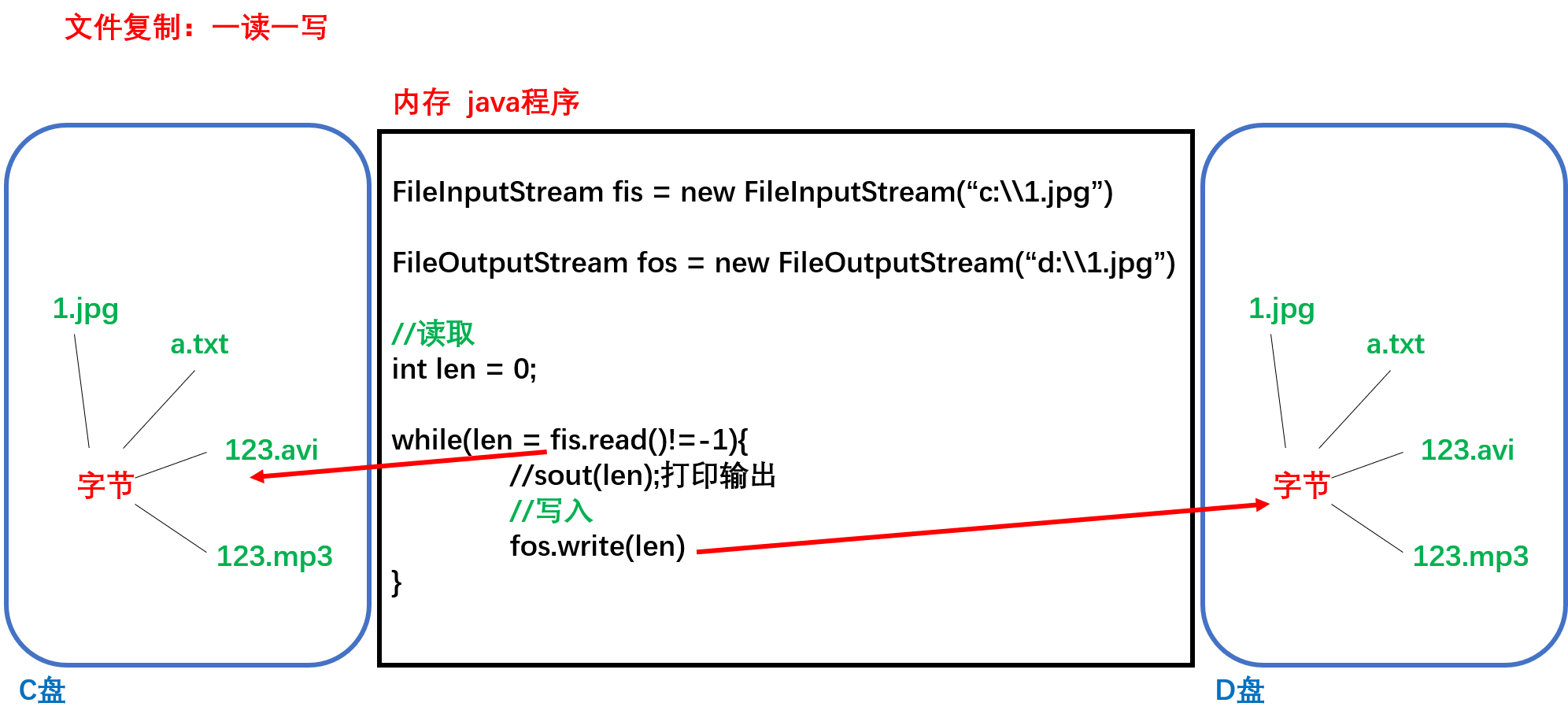import java.io.FileOutputStream;
import java.io.IOException;
import java.util.Arrays;
一次写多个字节的方法:
- public void write(byte[] b):将b.length字节从指定的字节数组写入此输出流
- public void write(byte[] b, int off, int len):从指定的字节数组写入len字节,从偏移量off开始输出到此输出流
public class Demo02OutputStream {
public static void main(String[] args) throws IOException {
//创建FileOutputStream对象,构造方法中绑定要写入数据的目的地
FileOutputStream fos = new FileOutputStream("D:\\environment\\java_project\\javase\\b.txt");
//调用FileOutputStream对象中的方法write,把数据写入到文件中
//在文件中显示100,写3个字节
fos.write(49);
fos.write(48);
fos.write(48);
public void write(byte[] b):将b.length字节从指定的字节数组写入此输出流
一次写多个字节:
如果写的第一个字节是正数(0-127),那么显示的时候会查询ASCII表
如果写的第一个字节是负数,那第一个字节会和第二个字节,两个字节组成一个中文显示,查询系统默认码表(GBK)
byte[] btes = {65,66,67,68,69};//ABCDE
//byte[] btes1 = {-65,-66,-67,68,69};//烤紻E
fos.write(btes);
//fos.write(btes1);
public void write(byte[] b, int off, int len):把字节数组的一部分写入到文件中
int off:数组的开始索引
int len:写几个字节
fos.write(btes,1,2);//BC
写入字符串的方法:可以使用String类中的方法把字符串,转换为字节数组
byte[] getBytes() 把字符串转换为字节数组
byte[] bytes2 = "你好".getBytes();
System.out.println(Arrays.toString(bytes2));//[-28, -67, -96, -27, -91, -67]
fos.write(bytes2);
//释放资源
fos.close();
}



